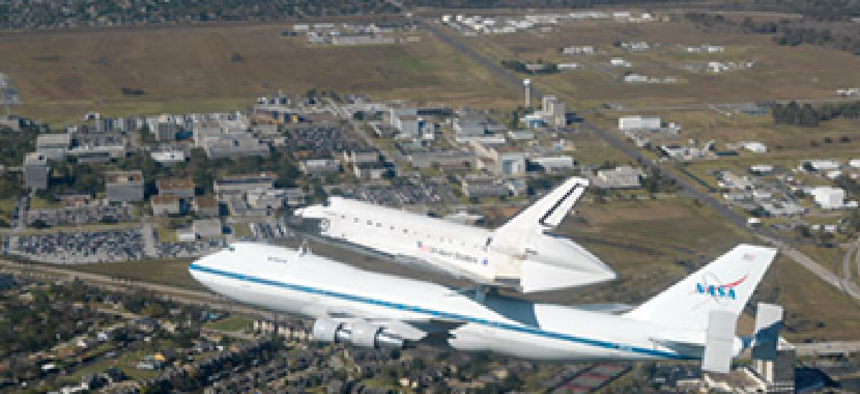NASA seeks feedback on next-generation technology contract

Agency explores a move to firm-fixed-price with the next iteration of its Simulation and Software Technology contract.

The shuttle Endeavor flies over the Johnson Space Center in this photo from 2008. The Johnson Space Center Engineering Directorate's Software, Robotics and Simulation Division is one of the key NASA programs that the SSTC contract supports. (NASA photo)
NASA's Simulation and Software Technology Contract (SSTC) provides a slew of services to the space agency, but its pending September expiration has NASA seeking new procurement approaches as it develops a follow-on contract potentially worth $132 million.
The contract, currently held by L-3 Communications, plays an integral role in NASA's simulation and robotics divisions and its ground and space flight applications.
A recent request for information shows the agency is examining procurement approaches, small business requirements and organizational conflicts of interest as it develops the follow-up to SSTC, according to FCW's sister publication, Washington Technology.
The RFI explains that the current iteration of SSTC is a cost-plus-fixed-fee contract, but the agency wants to explore whether portions of it can be firm-fixed price, in which an agency sets a ceiling for a specific service and the contractor agrees to meet it.
In addition, the RFI looks to determine how small business goals can be met through the contract, and requests comments and mitigation plans from industry on organizational conflicts of interest that could arise from the contract.
Formal responses to the RFI are due May 30.
Currently, SSTC supports many NASA programs, including the Johnson Space Center Engineering Directorate's Software, Robotics and Simulation Division, the International Space Station, the Orion Multi-Purpose Crew Vehicle, the Training Systems for the 21st Century and other space exploration programs.
SSTC is also the exclusive contract for the Trick Simulation Environment, the architecture used by astronauts to train for the International Space Station.
The RFI states SSTC also provides engineering in the areas of automation, intelligent systems, telerobotics and autonomous robotic systems for ground and space flight applications.
The SSTC also provides support for other areas, including software design, prototyping, systems engineering, software integration, software life-cycle management, requirements analysis, systems management and system architecture analysis in each of the software functional domains.
NEXT STORY: A new way to 'make it up on volume'






